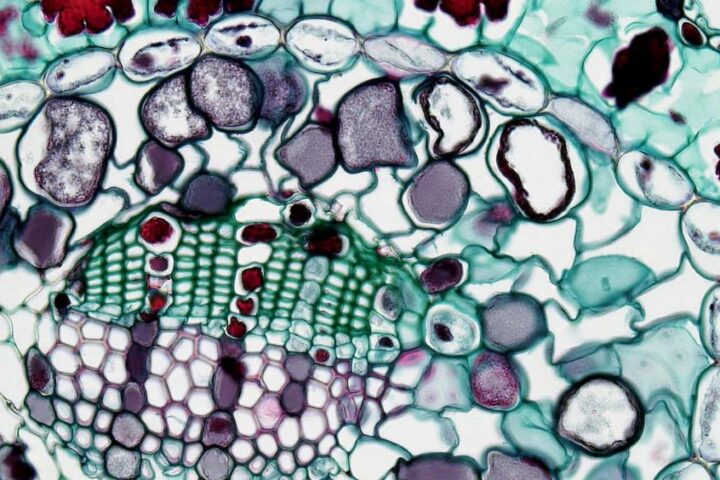Results, published in Scientific Reports , showed that Glyphosate and Roundup increased seizure-like behavior in soil-dwelling roundworms and provided significant evidence that glyphosate targets GABA-A receptors. These communication points are essential for locomotion and are heavily involved in regulating sleep and mood in humans. What truly sets this research apart is that it was done at significantly less levels than recommended by the EPA and those used in past studies. Glyphosate was first registered for use in the U.S. in 1974. Glyphosate is one of the most widely used herbicides in the United States. People apply it in agriculture and forestry, on lawns and gardens, and for weeds in industrial areas. Some products containing glyphosate control aquatic plants too. Glyphosate is used in products such as Roundup to control weeds in both agricultural and non-agricultural settings.
The most well-known source of glyphosate is Roundup, a common trade name herbicide formulation by Bayer/Monsanto. Residues of this chemical have been found in consumer foods such as bagels, honey, flour, and infant formula. A recent report by the United States Centers for Disease Control and Prevention found more than 80 percent of urine samples from children and adults in the U.S. contained the herbicide glyphosate. A study by Florida Atlantic University and Nova Southeastern University takes this research one step further and is the first to link the use of the herbicide Roundup, a widely used weed killer, to convulsions in animals.
Glyphosate is a non-selective herbicide, meaning it will kill most plants. It prevents the plants from making certain proteins that are needed for plant growth. Glyphosate stops a specific enzyme pathway, the shikimic acid pathway. The shikimic acid pathway is necessary for plants and some microorganisms. Glyphosate, the weed killer component in Roundup, is the world’s most commonly used herbicide by volume and by land-area treatment. Glyphosate-resistant crops account for almost 80 percent of transgenic crop cultivated land, which has resulted in an estimated 6.1 billion kilos of glyphosate sprayed across the world from 2005 to 2014. Roundup is used at both industrial and consumer levels, and its use is projected to dramatically increase over the coming years.
“It is concerning how little we understand the impact of glyphosate on the nervous system,” said Akshay S. Naraine, MSc., project lead and a Ph.D. student at FAU and the International Max Planck Research School for Synapses and Circuits. More evidence is mounting for how prevalent exposure to glyphosate is, so this work hopefully pushes other researchers to expand on these findings and solidify where our concerns should be. You can be exposed to glyphosate if you get it on your skin, in your eyes or breathe it in when you are using it. You might swallow some glyphosate if you eat or smoke after applying it without washing your hands first. You may also be exposed if you touch plants that are still wet with spray. Glyphosate isn’t likely to vaporize after it is sprayed.
Signs and symptoms for exposure to glyphosate —
Products containing glyphosate may cause eye or skin irritation. People who breathed in spray mist from products containing glyphosate felt irritation in their nose and throat. Swallowing products with glyphosate can cause increased saliva, burns in the mouth and throat, nausea, vomiting, and diarrhea. Fatalities have been reported in cases of intentional ingestion. Pets may be at risk if they touch or eat plants that are still wet with spray from products containing glyphosate. Animals exposed to products with glyphosate may drool, vomit, have diarrhea, lose their appetite, or seem sleepy. In humans, glyphosate does not easily pass through the skin. Glyphosate that is absorbed or ingested will pass through the body relatively quickly. The vast majority of glyphosate leaves the body in urine and feces without being changed into another chemical.
Results, published in Scientific Reports , showed that glyphosate and Roundup increased seizure-like behavior in soil-dwelling roundworms and provides significant evidence that glyphosate targets GABA-A receptors. These communication points are essential for locomotion and are heavily involved in regulating sleep and mood in humans. What truly sets this research apart is that it was done at significantly less levels than recommended by the EPA and those used in past studies. Long-term feeding studies in animals were assessed by the U.S. Environmental Protection Agency (EPA) and other regulatory authorities. Based on these evaluations, they found there is no evidence glyphosate is toxic to the nervous or immune systems. They also found it is not a developmental or reproductive toxin.
“The concentration listed for best results on the Roundup Super Concentrate label is 0.98 percent glyphosate, which is about 5 tablespoons of Roundup in 1 gallon of water,” said Naraine. A significant finding from our study reveals that just 0.002 percent glyphosate, a difference of about 300 times less herbicide than the lowest concentration recommended for consumer use, had concerning effects on the nervous system.
Using C. elegans, a soil-dwelling roundworm, researchers first tested glyphosate alone and then both the U.S. and United Kingdom formulations of Roundup from two distinct time periods – before and after the U.K.’s 2016 ban on polyethoxylated tallowamine (POEAs). These conditions were selected to pinpoint which effects are specific to the active ingredient glyphosate, Roundup formulations in general, the POEAs surfactants, or any combination of these.
The study found that the active ingredient glyphosate exacerbated convulsions in C. elegans and suggest the GABA-A receptor as a neurological target for the observed physiological changes. The data also indicate that there is an important distinction between exposure to glyphosate and Roundup, with Roundup exposure increasing the percentage of C. elegans that did not recover from seizure activity. The non-recovery phenotype and prolonged convulsions in C. elegans from this study have helped to set a foundation for understanding nuanced physiological effects of herbicide that occur at concentrations exponentially below neurotoxic levels.
The use of these products are widespread despite the potential negative impacts that may exist,” said Ken Dawson-Scully, Ph.D., lab head, professor, senior vice president and associate provost, Division of Research and Economic Development, Nova Southeastern University. There have been studies done in the past that showed the potential dangers, and our study takes that one step further with some pretty dramatic results.
Herbicide use might affect soil-dwelling organisms like C. elegans. These roundworms undergo convulsions under thermal stress, and our data strongly implicates glyphosate and Roundup exposure in exacerbating convulsive effects. This could prove vital as we experience the effects of climate change, said Naraine.
This study provides evidence to further investigate how chronic exposure and accumulation may lead to neurodegenerative diseases such as Parkinson’s disease. Importantly, there also is a sub-neurodegenerative threshold that may dramatically impact dysregulation of neurotransmission. Animal and human studies were evaluated by regulatory agencies in the USA, Canada, Japan, Australia, and the European Union, as well as the Joint Meeting on Pesticide Residues of the United Nations and World Health Organization (WHO). These agencies looked at cancer rates in humans and studies where laboratory animals were fed high doses of glyphosate. Based on these studies, they determined that glyphosate is not likely to be carcinogenic. However, a committee of scientists working for the International Agency for Research on Cancer of the WHO evaluated fewer studies and reported that glyphosate is probably carcinogenic. There is no information for how exposure to glyphosate and Roundup may affect humans diagnosed with epilepsy or other seizure disorders,” said Dawson-Scully. Thus the study indicates that there is significant disruption in locomotion and should prompt further vertebrate studies.



















